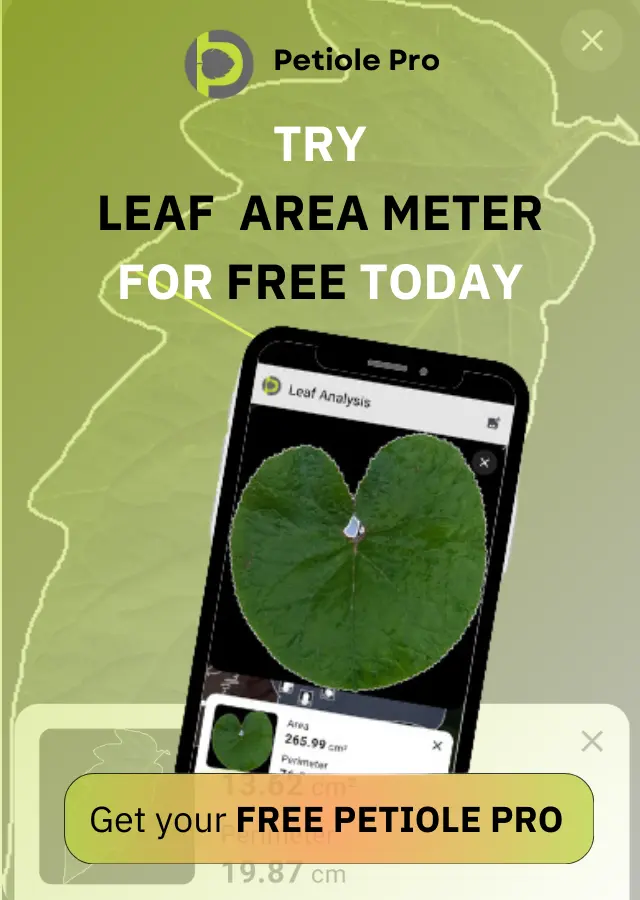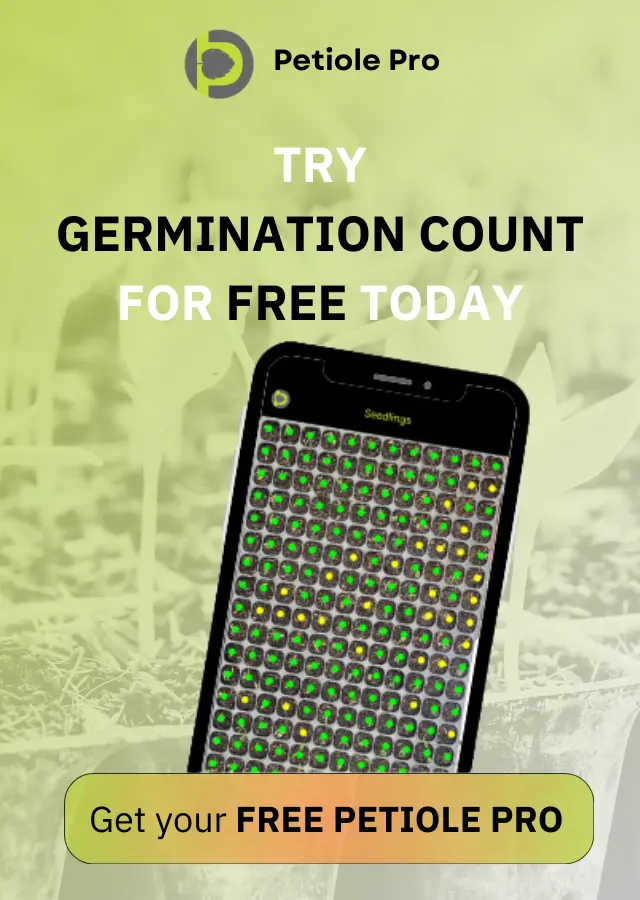🌱 AI for Turfgrass - Affordable Plant Phenotyping & Greenness Indices 🌱


The rising need for efficient and cost-effective methods to assess plant traits makes using consumer-grade digital cameras and custom-built LED lightboxes for plant phenotyping an intriguing area of exploration.
The backgroundn of the Turfgrass Research
The study “Visualizing Plant Responses: Novel Insights Possible through Affordable Imaging Techniques in the Greenhouse” investigated the use of a consumer-grade digital camera and a custom-built LED lightbox for plant phenotyping, focusing on turfgrass as a model plant.
 The lightbox is shown in greenhouse #1 (panel a, left side) with the camera installed on top. Source: Conley et al., 2024
The lightbox is shown in greenhouse #1 (panel a, left side) with the camera installed on top. Source: Conley et al., 2024
In the figure above: The remote trigger with switch and the 12‐volt power supply with 7.5 Ah SLA battery and wires are visible on the left and bottom left side. The lightbox diagram (panel b, right side) illustrates the placement of LED lights and demonstrates how a lysimeter would be inserted into the box and photographed against the white background.
The research was driven by the need for affordable and efficient phenotyping methods to address the challenges of a changing climate and growing food demand.
Methodology for the Turfgrass Research
The researchers created a controlled environment in a greenhouse, using PVC lysimeters to grow ‘TifTuf’ bermudagrass. The experiment involved different treatment combinations of mowing heights (2.5, 5.0, 7.5, and 10.0 cm) and irrigation levels (100%, 65%, and 30% of actual evapotranspiration).
 An example lysimeter uncorrected image and three masked views. Source: Conley et al., 2024
An example lysimeter uncorrected image and three masked views. Source: Conley et al., 2024
In the figure above: Experiment treatment 30% water and 5.0 cm mow height is shown in an image taken on 10/26/2023 (Week 2) with associated 0.61 NDVI and 7.0 VQ (panel a, upper left), 97.8% of the lysimeter area covered in live green material (%C) segment (panel b, upper right), resulting in 0.280 DGCI, 0.400 HSVi and 7.010 COMB2 calculation values, with 31.1% yellow (%Y) plant cover (panel c, lower left), and 59.0% green (%G) cover fraction (panel d, lower right).
- Images of the turfgrass were captured approximately every other week for eight weeks, and subsequently analysed using custom Python scripts and the open-source software ImageJ.
- The researchers focused on quantifying plant cover and analysing colour metrics, comparing these measurements to data collected using a Holland Scientific RapidScan CS-45 spectroradiometer, which provided reflectance values in the red, red-edge, and near-infrared spectral bands.
- This allowed them to calculate established vegetation indiceslike NDVI and NDRE, as well as other colour indices.
- The study examined the impact of different image file formats (JPEG and TIFF) and image corrections (geometric lens correction and colour correction) on the results.
- Additionally, the research evaluated the correlation between image-based metrics and traditional assessment methods, such as visual quality ratings and NDVI, to assess the effectiveness of the consumer-grade camera approach.
 Medians and significant difference for file format and correction effects. Source: Conley et al., 2024
Medians and significant difference for file format and correction effects. Source: Conley et al., 2024
In the figure above: a one‐way Chi‐square approximation of the non‐parametric Kruskal‐Wallis test, and Dunn’s joint ranks test with Bonferroni adjustment using the JPEG file format as control. Bold font indicates the correction for each metric variable which correlated best with its associated reference measurement. Significant difference in median values is noted as, not significant, p ≤ 0.05, p ≤ 0.01, and p ≤ 0.001, by symbols, NS, , *, and *** respectively.
 Effect sizes, significance levels for treatments. Source: Conley et al., 2024
Effect sizes, significance levels for treatments. Source: Conley et al., 2024
In the figure above: Partial eta‐squared (ηp2) effect sizes and significance level of permutational multivariate ANOVA results using 100,000 iterations, for the experimental treatments mow height (Mowing or M), water supplied (Irrigation or I) and date of measurement (Date or D), with interactions, on VQ, NDVI, and image metrics. The file format and image correction applied are noted above the variable name. ηp2 values indicate percentage of variance accounted by the effects. Significant difference for means is indicated as, not significant, p ≤ 0.05, p ≤ 0.01, and p ≤ 0.001, by symbols, NS, , *, and *** respectively.
 NDVI time series chart with NDVI plotted on the Y‐axis and date on the X‐axis. Source: Conley et al., 2024
NDVI time series chart with NDVI plotted on the Y‐axis and date on the X‐axis. Source: Conley et al., 2024
In the figure above: The experimental treatments are labeled by their percentage of consumptive demand‐based irrigation supplied (i = 100, 65, & 30) and their mowing heights (h = 10, 7.5, 5.0, & 2.5 cm). Each treatment is grouped by irrigation level and uniquely colored, the line pattern is based on mowing height. NDVI shows changes in time and differences with experimental treatment.
Key Findings on the greenness indeces in turfgrass
The research found that the consumer-grade camera system was able to effectively capture phenotypic traits related to cover and colour.
Specifically, the percentage of yellow colour area (%Y) showed a strong negative correlation with human visual quality ratings, and the dark green colour index (DGCI) positively correlated with clipping productivity.
-
The image-based metric COMB2, which combined three vegetation indices, correlated negatively with water use and also showed sensitivity to the experimental treatments.
-
The study highlighted that image corrections could significantly affect the results of certain metrics, but these effects were inconsistent and difficult to generalise.
-
Therefore, the authors suggested further research to establish standardised protocols for image corrections and to better understand their impact on image-based plant phenotyping data.
They also recommended the use of iterative visual assessment to fine-tune segmentation parameters and ensure accurate feature selection in the images.
Overall, the study demonstrated the potential of using consumer-grade cameras and open-source software for plant phenotyping research, offering a more affordable and accessible alternative to expensive and complex methods.
The researchers emphasised the importance of transparent protocols, detailed metadata, and robust statistical analysis to ensure the reliability and validity of the data collected.
They also acknowledged the need for further research to fully validate the findings, connect image data to biological processes, and explore the applicability of the approach to other plant species and traits.
🟢List of indices used for plant and turfgrass health assessment 🟢
- %Y (Percent Yellow): This index represents the percentage of the lysimeter area covered by yellow, senescent or chlorotic plant material. The researchers found that lower %Y values correlated with higher turfgrass quality. They suggest that using a dedicated yellow cover class, like %Y, allows for a more comprehensive assessment of turfgrass composition and health compared to methods that only rely on greenness.
- %G (Percent Green): This index quantifies the portion of the lysimeter covered by healthy green plant material. The researchers found that %G correlated strongly with NDVI, suggesting its utility as a measure of green plant cover.
- DGCI (Dark Green Colour Index): This index is commonly used to assess turfgrass quality. In the study, DGCI correlated strongest with clipping productivity, indicating its potential for estimating plant biomass.
- COMB2: This is a novel index developed by the researchers, combining three existing vegetation indices: Excess Green Index (ExG), Colour Index of Vegetation Extraction (CIVE), and Vegetation Extraction Index (VEG). COMB2 was designed to be more sensitive to vegetation changes and less affected by soil background. The researchers found that COMB2 correlated strongly with water use and differentiated between treatment effects, including interactions between date, mowing height, and deficit irrigation.
- BA (CIELAB b/a chromatic ratio): This index is a ratio of the b* (blue-to-yellow) to a* (green-to-red) colour dimensions from the CIELAB colour space. It was used to highlight plant health based on green and yellow pigment status. While the study found strong correlations between BA and NDRE and RE reflectance, the authors noted a lack of existing research using this ratio in plant phenotyping, suggesting the need for further investigation.
- HSVi: This is another novel index developed in the study, calculated using the Hue value from the HSV (Hue-Saturation-Value) colour space and factoring in image brightness (illumination). The researchers found that HSVi correlated most strongly with NIR spectral reflectance. They hypothesised that HSVi variations might be useful in detecting pigmentation status or tissue health but acknowledged the need for further research to determine its biological significance.
- NDVI (Normalised Difference Vegetation Index): Although NDVI data was collected using a spectroradiometer rather than the consumer-grade camera, it was calculated in the study and used as a reference measurement to compare against image-based metrics. NDVI is a widely used index for assessing canopy cover.
- NDRE (Normalised Difference Red Edge Index): Similar to NDVI, NDRE was calculated based on spectral reflectance measurements from the spectroradiometer and served as a reference measurement. NDRE is considered more sensitive to plant nitrogen and chlorophyll status than NDVI.
The sources also mention the Excess Green Index (ExG), Colour Index of Vegetation Extraction (CIVE), and Vegetation Extraction Index (VEG), which were used to calculate COMB2. While the researchers calculated these indices, they primarily focused on the performance of the combined COMB2 index.
Citation
Conley, M. M.; Hejl, R. W.; Serba, D. D.; Williams, C. F. Visualizing Plant Responses: Novel Insights Possible through Affordable Imaging Techniques in the Greenhouse. Preprints 2024, 2024080999. https://doi.org/10.20944/preprints202408.0999.v1
Petiole Pro: Dark Green Colour Index (DGCI) Free Web Tool
The Petiole Pro Dark Green Colour Index (DGCI) Free Web Tool offers an innovative, accessible solution for analyzing plant health and chlorophyll content through color metrics. Designed for researchers, agronomists, and farmers, this web-based tool simplifies the process of measuring DGCI using standard digital images.
By providing an easy-to-use platform, it enables quick and accurate assessments of plant traits, supporting more informed decision-making in agriculture and plant science. Explore how this tool can streamline your plant phenotyping workflows while delivering reliable insights at no cost.
Try Petiole Pro: Dark Green Colour Index (DGCI) Free Web Tool

Youtube - AI in Agriculture Podcast: Seeing Green in Affordable Plant Phenotyping

